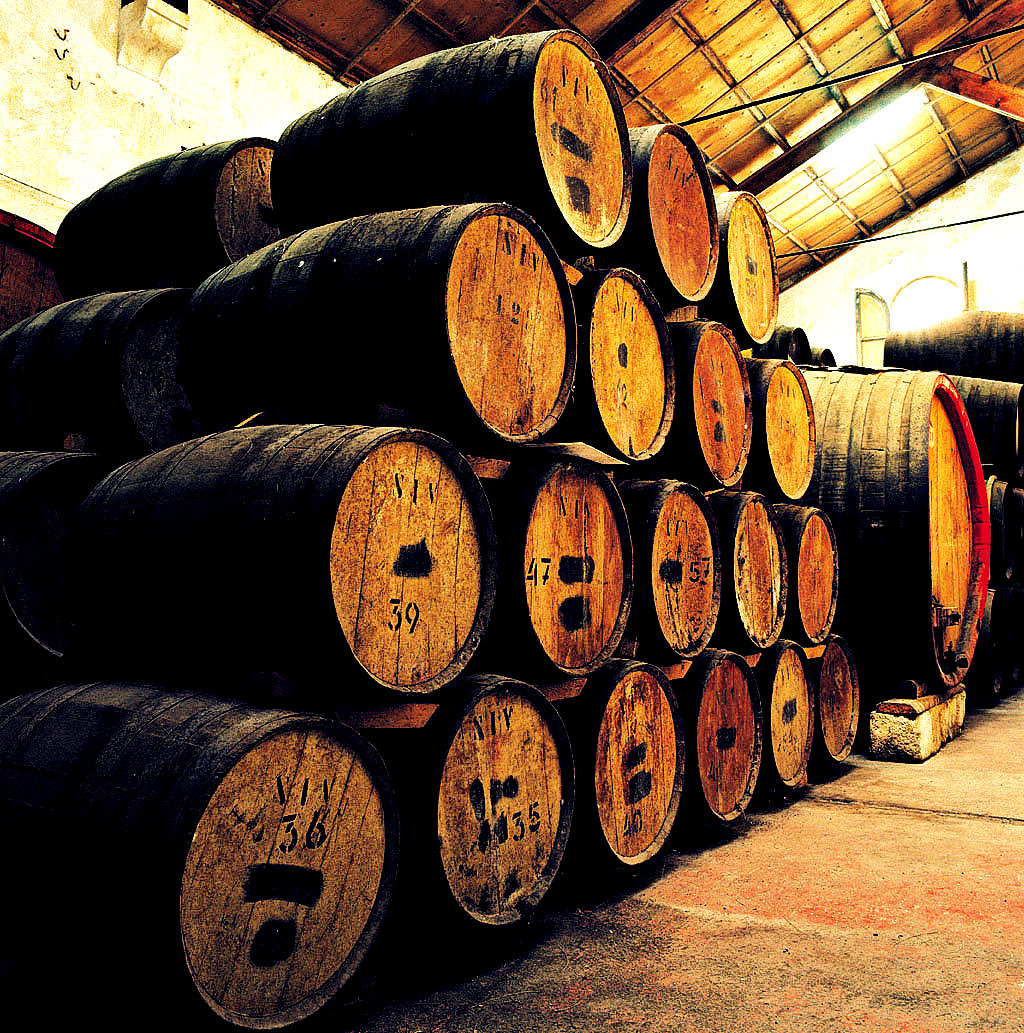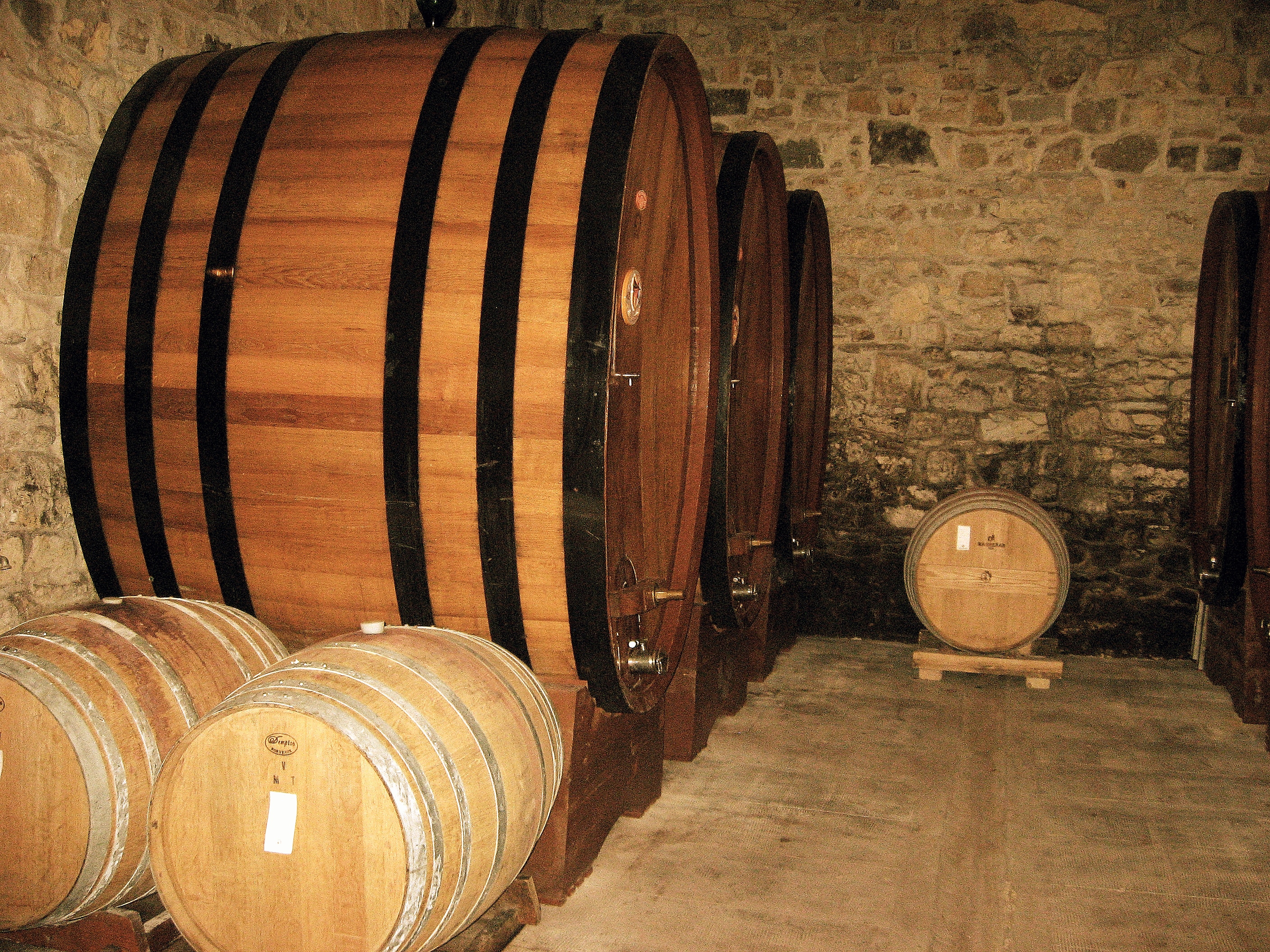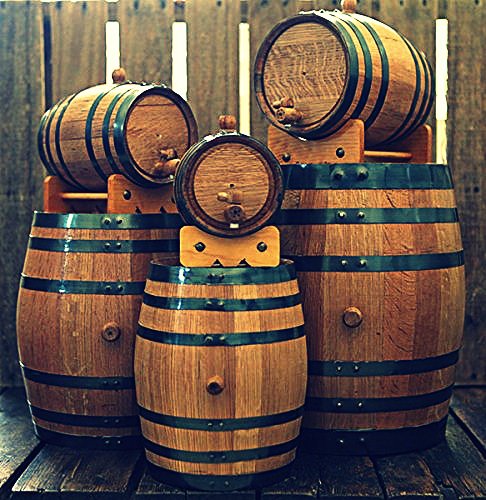A detailed peek into why wine barrels are such an integral part of modern winemaking. Learn about the different kinds of barrels that are used and how they affect wine.
Why do wines get aged in oak barrels?
Before there were glass bottles (1600’s and before), most wines were stored and sold in wooden barrels. In fact, paintings from around this time period often show wine barrels strewn about. And, while we’ve outgrown the necessity for barrels to store and transport wine, we’ve come to acquire a taste for it. Oak barrels are an integral part of modern winemaking (and whisky too!)
How Do Oak Barrels Help Wine?
Oak offers three major contributions to wine:
1. It adds flavor compounds–including aromas of vanilla, clove, smoke and coconut.
2. It allows the slow ingress of oxygen–a process which makes wine taste smoother and less astringent.
3. It provides a suitable environment for certain metabolic reactions to occur (specifically Malolactic Fermentation)–which makes wines taste creamier.
What Flavors Does it Add?
Unlike beer, wine does not allow flavor additives (i.e. coriander, orange peel, etc). Thus, oak has become the accepted way to affect the taste of wine. When added to wine, oak flavors combine with wine flavors to create a wide variety of new potential flavors.
Flavor Compounds from Oak
· furfural dried fruit, burned almond, burnt sugar
· guaiacol burn overtones
· oak lactone woody, dill and coconut notes
· eugenol spices, cloves and smoke character
· vanillan vanilla
· syringaldehyde vanilla-like

The Differences of New vs Used Oak and Aging
Just like tea, oak flavor extraction is reduced each time it’s used. You’ll also notice that aging periods vary depending on the winemaker’s preference as well as the type of wine. Here are a few classic aging regime examples to compare:
Size Matters: The larger the barrel used, the less oak lactones and oxygen are imparted into a wine. Barriques are traditionally 225 liters, whereas Botti andFoudres are much larger – from about 1000–20,000 liters.
· Pinot Noir 10 months in used French oak barriques (Raen Winery)
· California Chardonnay 13 months in ~50% new French oak barriques (Lynmar)
· Bordeaux 12 months in 50% new French Oak barriques (Chateau Pontac-Lynch Margaux)
· Zinfandel 17 months in 20% new French, American and Hungarian barriques (Carol Shelton)
· Malbec 18 months in untoasted 3500 liter foudres ( Altos las Hormigas)
Brunello di Montalcino 24 months in large used 1000+ liter French and Slavonian Oak botti ( Uccelliera)
· Gran Reserva Rioja 24 months in 40% American and 60% French Oak (Valserrano)
Different kinds of oak used for winemaking.
There are 2 primary species preferred for winemaking: Quercus alba or American white oak and Quercus petrea or European white oak. Each species offers slightly different flavor profiles. Additionally, the climate where the oak grows also affects flavors. So for example, wines aged in Quercus petrea from Allier, France will taste different from wines aged in Quercus petrea from the Zemplen Mountains forest in Hungary.

· European Oak Found in France, Hungary, Slavonia (Croatia)

· American Oak Found in Missouri and the midwest
Difference between American and European (French) Oak.
The major distinguishable physical difference between the wine oak species is its density. European oak tends to be more dense (closer spaced rings) which has been suggested to impart less oak lactones and oxygen than American oak. Generally speaking, American oak is ideal for bolder, more structured wines (Cabernet Sauvignon, Petite Sirah) that can handle American oak’s robust flavors and oxygen ingress, whereas European oak is ideal for lighter wines (such as Pinot Noir or Chardonnay) that require more subtlety.
Other Woods Used to Age Wine
Wine has been aged in a variety of different wood species to varying degrees of success (imagine for example, wine aged in pine!). Several different species have been found to work well for aging wine:
1. Chestnut Castanea sativa Offers more oxygen ingress, no oak lactone and increased guaiacol and vanillan
2. Acacia Robinia pseudoacacia Possible increased oxygen ingress and no oak lactone
3. Iberian Oak Quercus pyrenaica Offers more oxygen ingress and increased vanilla tones
4. English Oak Quercus robur Similar to Quercus petrea
Last Word: You get what you pay for
Only about 2 oak barrels can be made per oak tree which takes several decades to grow. Additionally, the process of coopering the wood into barrels takes great skill. For this reason, the average price of a new wine barrel costs the winery about $600–$1200. This adds on about $2–$4 in raw materials cost for a single bottle of wine. This is part of the reality of what it takes to make great wine.
Winefolly















